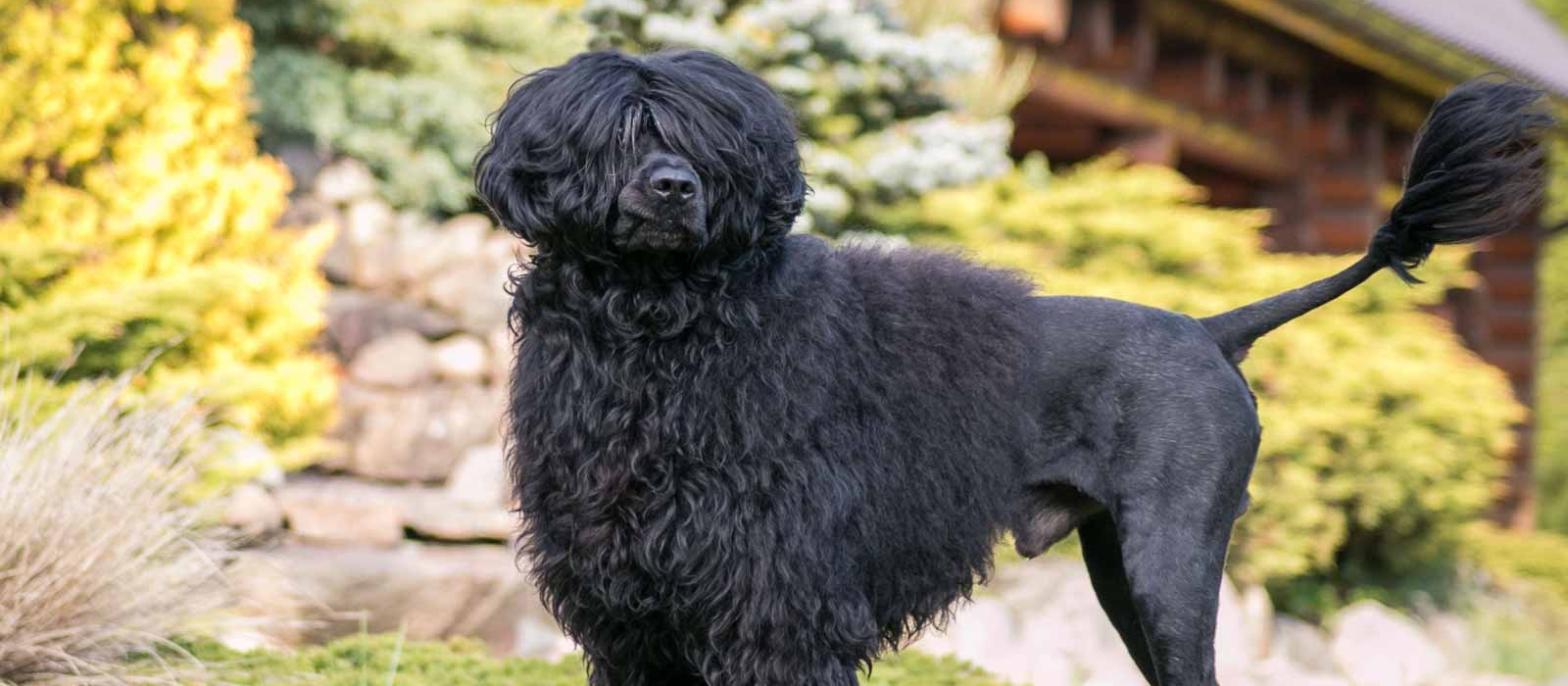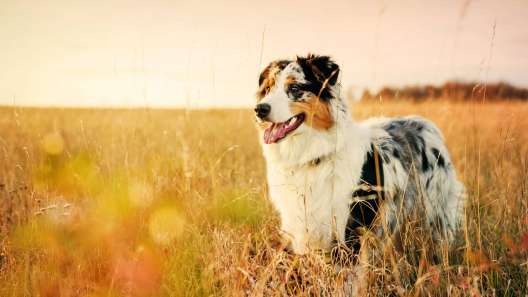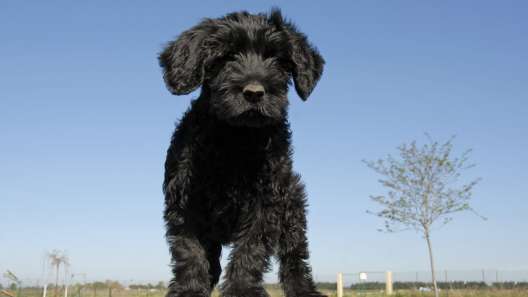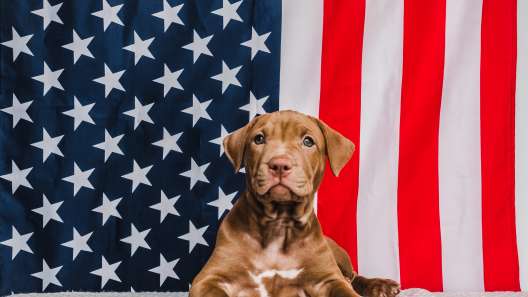-
Activity Level:
high
-
Shedding Level:
low
-
Grooming Level:
moderate
-
Trainability:
high
-
Good for Novice Owners:
high
-
Adaptability:
high
-
Kid/Pet Friendly:
often
-
Prey Drive:
moderate
-
Watchdog:
aware
- Average Size: Medium
- Average Lifespan: 11-13 years
- Registered?: aca, akc, other
Portuguese Water Dog Dog Breed Information
Overview
Temperament
Adaptability
Health
Owner Experience
Grooming
Activity Level
Size
Life Span
Did You Know?
The curly-coated Portuguese Water Dog is a working breed that is about as fun-loving and lively as any dog breed out there! The Portuguese Water Dog was originally used by Portuguese fishermen. They would ride in trawlers as they sailed from Portugal’s warm Atlantic waters to the cold waters off the coast of Iceland. These dogs were often used to retrieve equipment that was lost overboard and were even known to “herd” fish into the nets, which made them very valuable fishing companions. They were even also used as couriers sometimes, carrying or retrieving things from ship to shore and back or ship to ship.
One of the facts about Portuguese Water Dogs is that they love to be in the water, and this can surely be attributed to their history as a “Fisherman’s Friend.” Having a waterproof coat and webbed feet never hurts when you like to swim, of course! As a matter of fact, this dog is so well known to be a water lover that the Portuguese call them “Cao de Agua”, which means “Dog of Water”.
During the early 1900s, Portugal faced social upheaval, which put the Portuguese Water Dog in danger, among other things. Dr. Vasco Bensuade, who was a dog fancier and a wealthy Portuguese shipping magnate, is credited with saving the breed. Although they aren’t found as often working on boats as they used to, Portuguese Water Dogs can often be found working in water rescue. The American Kennel Club recognized the Portuguese Water Dog at the beginning of 1984 as a member of the Working Group.
The Portuguese Water Dog, affectionately nicknamed the Portie, has a friendly and playful disposition. They are known for being affectionate with their families and good with children and strangers as long as they are properly socialized early in life. They can be quite energetic and exuberant, especially as puppies, which is a consideration for families with very young children.
Any interactions between young kids and puppies should be supervised, regardless. They also tend to do fairly well with other dogs, and they will be generally friendly with other family pets. Although they will tend to bark to alert you, they aren’t generally prone to barking a lot unless they have been trained into it.
This is a very adaptable dog breed. They are not particularly sensitive to hot or cold climates, but be careful of extreme temperatures, as with all breeds. They thrive in homes with yards where they can run, and will do well in an apartment setting as long as they are properly exercised and have enough attention. The Portuguese Water Dog will not enjoy long periods of alone time, as they are happiest while spending time and engaging with their family.
Overall, the Portuguese Water Dog is generally a very healthy breed. The major health concerns to be aware of are Juvenile Dilated Cardiomyopathy and Storage Disease, which are both genetically passed on to puppies by the parents and can be avoided with proper genetic testing. Good breeding practices and the health of the parents make a big difference in the health of Portuguese Water Dog puppies.
Reputable breeders will screen their dogs to ensure they are not passing preventable issues to puppies. Don’t be afraid to talk to the breeder about the genetic history of the parents and to ask about relevant health clearances.
The Portuguese Water Dog Club of America, Inc. recommends DNA tests for Early Onset Progressive Retinal Atrophy (EOPRA), GM1 Gangliodosis, Juvenile Dilated Cardiomyopathy (JDCM), Microphthalmia Syndrome (MO), and Progressive Retinal Atrophy (PRA-prcd, PRCD), as well as a hip evaluation and an ophthalmologist evaluation.
Porties are known for being highly intelligent dogs that pick up on things quickly and are eager to please. Although they can often think independently and are known to sometimes try to push boundaries, they are still a good fit for owners of all experience levels.
They pick up simple commands very quickly and are easily housebroken, the majority of the time. Even for an owner who is looking to use this dog breed for agility or other advanced uses like a service dog, these dogs will meet practically any challenge. Socialization, bonding, and more are benefits of puppy training classes, so they can be a good idea even if you don’t necessarily need them for help with training.
The Portuguese Water Dog is a low-shedding breed, but that does not mean they don’t require proper grooming. Dog coat types for PWDs can range from loose and wavy to tight and curly. There are two different grooming cut styles well known for the PWD, the Lion clip and the Retriever clip.
With a Lion cut, the hindquarters, muzzle, and the base of the tail are shaved, with the rest of the coat full length. The Retriever cut is simply having the coat clipped to about 1″ over the dog’s entire body, while keeping the tip of the tail at full length for that classic Retriever tail fringe. Weekly brushing and the occasional bath are sufficient for keeping this dog’s coat healthy.
In addition to coat care, it’s also important to make time for nail care, ear care, and dental care. Usually, once or twice monthly nail trimming is enough to keep your dog’s nails from getting too long. Regularly checking and carefully cleaning your dog’s ears can help prevent ear infections. Proper dental care for dogs, like brushing your dog’s teeth or using an enzyme toothpaste every day in addition to cleanings at the vet when needed, can help prevent dental disease.
The Portuguese Water Dog has a high energy level; they should be exercised for at least an hour a day in addition to walks throughout the day, and will often be more than up for more activity if you are. A fenced-in yard is a nice option with this dog breed, as is an active family lifestyle.
Since PWDs are one of the dog breeds that love the water, swimming is a great activity for them. You might even have trouble getting them to come out of the water! They’re also a great fit for several dog sports, such as dock diving, agility, obedience, rally, tracking, and more! Just make sure to keep activities low-impact until puppies finish growing to avoid damage to developing bones and joints.
The Portuguese Water Dog is a medium-sized canine. A fully-grown Portuguese Water Dog usually stands 17-23 inches tall and weighs 35-60 pounds. Fully-grown females tend to average 17-21 inches tall and 35-50 pounds, while fully-grown males tend to average 20-23 inches tall and 42-60 pounds.
A Portuguese Water Dog generally lives for 11-13 years on average.
The 44th President of the United States, Barack Obama, chose the Portuguese Water Dog as his presidential family pet. The Obama family includes two Portuguese Water Dogs, Bo and Sunny. It’s said that one of the reasons the breed was chosen was because they are a low-shedding, hypoallergenic dog breed.









